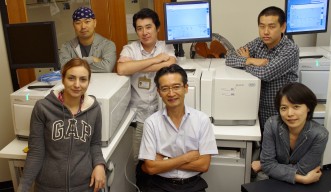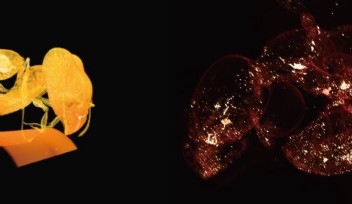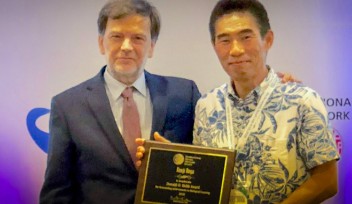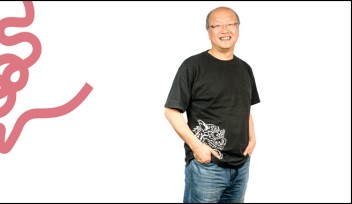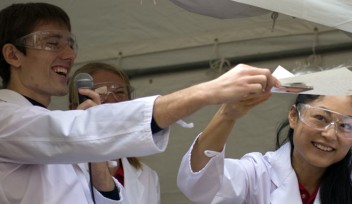The Team Behind the Genomes

In July OIST’s DNA sequencing section (SQC), which had been located 45 minutes away in Uruma, moved to the main campus’ Center Building in Onna. The move gives OIST researchers easier access to the section’s next-generation sequencers and team of technicians.
The conclusion of the human genome sequence in the early 2000s, and the subsequent sequencing of the genomes of everything from tomatoes to corals, have kept a spotlight on the technology that makes it all possible: DNA sequencing machines. Modern next-generation DNA sequencers, which have a completely different technology from conventional DNA sequencers used for the human genome sequence, enable us to produce a large amount of data with massive parallel sequencing. The procedure of next-generation sequencing is that DNA is broken down into small fragments, and the two strands of its double helix are split apart to form two templates. These templates are fixed to a spot and treated with a solution of DNA building blocks (A, C, T, and G) plus a DNA-making enzyme. Depending on the specific technology, each specific base incorporation is recognized by either a fluorescent marker to the base or a tiny visible light emitted as a result of DNA making enzyme activity. After each base-adding step, a camera within the sequencer snaps pictures of all the fragments, showing which base was just added to each; these pictures are later processed to compute the full sequence for all of the fragments.
“Every year now we have more and more people who realize the power of this technology and incorporate it into their research,” comments Prof. Alexander Mikheyev of the Ecology and Evolution Unit. “Two years ago there were just two users, and now at least half of OIST’s biology labs use it to some extent.”
Currently, the university has three Illumina and three Roche machines; the former have a lower error rate, and are best for comparing different individuals of the same species, while the latter can handle longer fragments, so are a better choice for sequencing pieces of a species’ genome that have never been sequenced before, and for which no roadmap exists for piecing small fragments back together. Some projects require the use of both types of sequencers to harness the advantages of each.
But the process requires plenty of human work to run properly: DNA samples have to be prepared just so in order to get the best data. “The first step is where SQC stands out”, says Prof. Noriyuki Satoh, who heads the Marine Genomics Unit. “These are still new machines—they’re not easy to use,” he explains. “The sequencing staff are constantly studying new techniques, new devices, and new methods, and they get such beautiful data that they’ve been invited to present their methods at meetings.” SQC members say, “Our team is trying to bring original ideas to this fast-changing field of technology. By improving relevant protocols from DNA preparation to sequencing, we can yield high quality data.” They added, “We believe that our efforts will contribute to world-class research at OIST.”
Specialty
For press enquiries:
Press Inquiry Form










